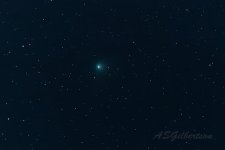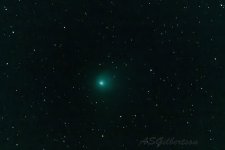tenex
reality-based
In binoculars it's round and fuzzy. In our 82mm scope at 70x I can see the central bright point Sky & Telescope described as "prominent near-stellar pseudo-nucleus", but nothing further. How large a scope would be needed to show a tail or greenish color? How much would a truly dark sky matter? (suburban light pollution here)










